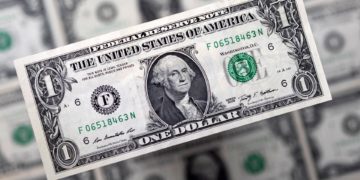The Australian Dollar (AUD) extends the winning streak that began on Wednesday. The Aussie pair is receiving upward support, propelled by robust underlying commodity prices amid the ongoing violence in the Middle East.
Australia has committed to ensuring a stable supply of energy resources to Japan in the fifth Japan-Australia Ministerial Economic Dialogue. This agreement reflects a strategic partnership between the two countries, emphasizing the importance of a reliable and consistent flow of energy resources, likely encompassing areas such as coal, and liquified natural gas (LNG).

Moreover, this commitment is geared towards creating a dependable investment environment in Australia’s resources and energy sector.
China has decided to extend its investigation into trade barriers imposed by Taiwan for an additional three months, as announced by its commerce ministry on Monday. Australia is the largest exporter of commodities such as iron ore, coal, and natural gas.
Any escalation in trade tensions between China and Taiwan could affect global trade dynamics and, consequently, commodity prices. This, in turn, can impact the Australian economy and the Australian Dollar (AUD).
The US Dollar Index (DXY) has bounced back after three consecutive days of losses, trading around 106.20, by the press time. The strength in the US Dollar (USD) can be attributed to the impressive US Nonfarm Payrolls data unveiled on Friday.
Daily Digest Market Movers: Australian Dollar trades higher due to surging commodity prices
- The heightened geopolitical tensions in the Middle East, are contributing to increased demand for commodities like energy and gold, positively influencing the performance of the AUD/USD pair.
- Japan’s Economy, Trade, and Industry Minister Yasutoshi Nishimura convened in Melbourne with his Australian counterpart Don Farrell along with Climate Change and Energy Minister Chris Bowen and Resources Minister Madeleine King in the fifth Japan-Australia Ministerial Economic Dialogue.
- Nishimura, addressing reporters after the meeting, highlighted that they reached an agreement to guarantee a stable supply of resources, including liquefied natural gas (LNG), and to establish a dependable investment environment in Australia’s resources and energy sector.
- Australia’s central bank could go for a rate hike, with expectations pointing toward a peak of 4.35% by the end of the year. This projection aligns with the persistent elevation of inflation above the target.
- The US Nonfarm Payrolls report for September revealed a notable increase of 336,000 jobs, surpassing the market expectation of 170,000. The revised figure for August stood at 227,000.

Technical Analysis: Australian Dollar consolidates above 0.6350, barrier at the 21-day EMA
Australian Dollar holds ground, trading higher around 0.6370 against the US Dollar (USD) on Monday. The 21-day Exponential Moving Average (EMA) at 0.6396 seems to be a significant hurdle, aligning with the psychological level of 0.6400. A decisive break above this level could pave the way for the pair to explore higher levels, with the 23.6% Fibonacci retracement at 0.6429 as a potential target. On the downside, the key support is seen at 0.6300, followed by the November low at 0.6272. These levels serve as crucial markers for potential shifts in the currency pair’s trajectory.











































